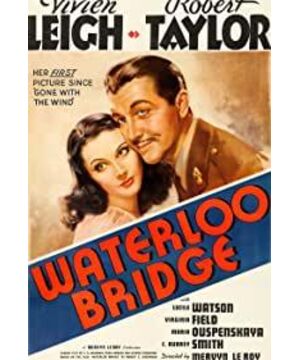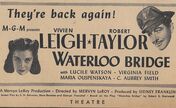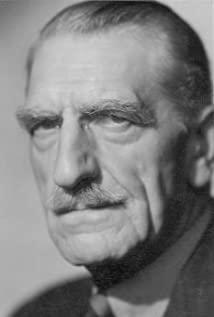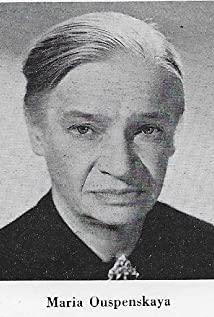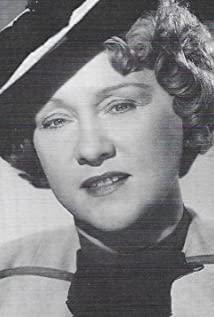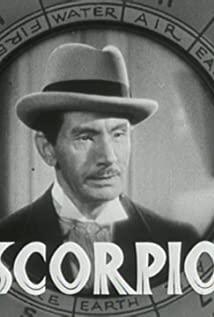The first half of the film shows a passionate and elegant love. After Mara met the Prince Charming in her heart, the love accumulated in her heart was suddenly triggered, and she soon entered a state of obsession. The rhythm of her life was completely disrupted, and there was only sincere love for Roy in her heart, and even the ballet career she once dedicated herself to took a back seat at this time. However, Mara's almost maddening behavior is so real and lovely in the elegant Vivien Leigh, natural and pompous. Although Roy was also a little carried away in love, he was from a noble family after all. Even when his emotions were surging, he always kept his identity and always looked so personable. Mara's love is an artist's love, and Roy's love is luxurious. The combination of the two gives the audience a hearty and otherworldly feeling. However, the atmosphere of the film has changed since Roy's expedition. "Swan Lake" in Mara's life ended suddenly before it ended successfully, and she was immediately thrown back into the cold reality of wartime. Dismissal and unemployed, lovers "killed", bedridden due to illness, and falling into the dust, one after another, the audience, like Mara, became more and more heavy and stagnant. When Roy "dead" came back to life, Mara's love was activated again. However, she can no longer be the innocent and affectionate girl who was once bitter, and she can't bear to hurt the person she deeply loves. But her love for Roy had reached the point where she lost herself, and leaving him would be equivalent to losing everything in her life. She couldn't bear this merciless blow, and finally freed herself, and returned to Huangquan with hatred. The second half of the film is mournful and tearful, giving people a sense of loss after watching it. The joy in the first half is in stark contrast to the sadness in the second half, which makes it all the more sad. In just over an hour, the audience was surging, sometimes being thrown to the top of the wave, and sometimes being pushed into the bottom of the valley. In this ups and downs, the audience gained a beautiful enjoyment (the kind of tenderness and sadness left to the audience at the end of the film). The lingering aftertaste is also an aesthetic experience).
Safflower still needs green leaves to help. Another unforgettable feature of this film is its creation of emotional atmosphere. Director Leroy is a master here, he mobilized various artistic means to endow the film with a warm and touching, lingering romantic mood. The most popular scene in the film is the candlelight ball scene: in the dark of night, the band played a dance music based on the Scottish folk song "The Good Times of the Past". Mara and Roy step onto the dance floor for their last dance before breaking up. The lights suddenly went out, and the musicians lit candles, blocking the candles from time to time in tune with the rhythm of the music. In the ballroom, with the beautiful and slow melody of the music, the candles flickered on and off, and they cuddled together involuntarily with their dance partners. At this time, the scene blends, the artistic conception, and the taste, it is really "the beauty is difficult to tell you". In the next scene, Mara got up early and looked out the window, and suddenly found Roy standing soaked in the light rain, and Mara was overjoyed. The cold rain not only reflected Roy's sincerity, but the drizzle also had a romantic feeling. Isn't that right, when the girl of her first love wakes up from a dream and sees her lover standing in the distance, it seems like a fantasy, and the joy is indeed contagious. There are many other places in the film that use scenery, music and other means to create atmosphere, and they play a very important role in the success of the film. Leroy is also very good at expressing emotions with small props. The auspicious symbols appear four times in the film, and each time they embody a certain emotion of the people in the play. Especially the last time, after Mara crashed the car, the handbag came apart and the lucky charm fell to the ground. When a hand picked it up, the audience recognized it as Roy's. He stared at the auspicious auspicious for a long time.
This film is a typical drama structure in terms of play, with clear origins and transitions, and well-developed prologue, beginning, development, climax, ending, and epilogue, and the form is standardized. The prelude of the film is Colonel Roy standing on Waterloo Bridge with auspicious charms in World War II, followed by a flashback to Captain Roy standing on the bridge in World War I at the beginning. The hero and heroine meet and fall in love on the bridge. Then the film entered the development department, and the love between the two quickly heated up. However, it was repeatedly hindered and restricted by the social environment, resulting in a series of dramatic conflicts. The film quickly climaxes when Marla comes to Roy's house to talk to her family. Mara decided to leave Roy after a fierce ideological struggle. Roy rushes to London anxiously looking for Mara, but Marla stands alone at Waterloo Bridge where they first met. After Mara walked towards the military vehicle, the film immediately turned to the ending. Roy picked up the auspicious amulet left on the ground, which led the audience to the time and space of the prologue, but it was the end. The film echoes the beginning and the end, and the deduction of the plot is also extremely smooth and natural, showing the skilled artistic attainments of the director. However, it is not difficult to see that these methods are very traditional and lack novelty. A film with a moving story, a captivating mood, and a brilliant and engaging storyteller by a director and a writer guarantee that it will be an entertaining movie that audiences will love. But if it lacks novelty in form or content, and at the same time fails to address reality, then it will never have a place in the history of film art development. For this reason, although Leroy has taken a lot of popular business cards, he can only be an "artisan", not an artist.
As for the war in this film, it is just a hazy background, which provides the author with essential building materials for weaving this love tragedy (for example, in order to express the arduousness of love and make the plot twists and turns, the hero must suddenly appear or disappear at some key points) , then the unpredictable nature of the war provided a convenient excuse for the director). In addition, the brutality of the war provides the necessary atmosphere for the film's mournful tone. However, anti-war can never be the theme of the film. The war never came to the forefront in this film, and the hostile sides never showed up. The director did not intend to show the bloody scenes of the war. The impact of the war on Mara's fate was only indirect (her unemployment and fall, Roy's specious death) , may also occur in peacetime). Similarly, social criticism is not the focus of the film's directors. The film does not show social injustice positively. Mara's misfortune is more caused by accidental and personal reasons (she lost her job because of her love and unintentional performance, and she was forced to sell laughter for a living because she mistakenly thought that Roy was dead and did not join her mother) . The weaving of a plot by accidental events is actually an important difference between melodrama and social realism. The former fabricates materials in life at will to obtain dramatic and moving effects, while the latter requires faithful reproduction of social contradictions and reveals the inevitability and regularity in social life. The film is clearly the former and not the latter. However, melodrama usually has a strong moral criticism, and most of it embodies the simple idea of "punishing evil and promoting good". In this sense, it also has a certain meaning of social criticism, but the object of its criticism is very vague and not implemented. However, this film is very different from ordinary melodrama, and its most outstanding point is that it does not show the struggle between good and evil. There isn't a single villain in the film, and even people with strong orthodoxy like Mrs. Cronin and Duke Cronin don't have a "fight against Mara", on the contrary, the latter still likes Mara. In this film, the director only shows the truth, the good and the beautiful, and never shows the false, the evil, and the ugly. When the truth (the truth of social reality) conflicts with the beauty, the director would rather make it virtual (for example, not to describe Mara's career as a joker). In short, the director tries his best to show the good side of life to the audience. However, without the battle of good and evil, where does the motivation for the development of the plot come from? The choreographer's answer comes from the oppression of people by the social environment, and from the restraint and harm of outdated concepts. In other words, the tragedy of this film is reflected in the feudal hierarchy of the soft knife to kill.
Britain is the most rigid and conservative country in Europe and America. After entering the 20th century, the concept of feudal hierarchy has gradually weakened in most capitalist countries, but its influence is deeply rooted in Britain. Even in 1936, King Edward VIII, who was the king of a country, wanted to marry a divorced American civilian woman, but he was not seen by British public opinion, so he had to abdicate, and ended up with a tragic reputation of "not loving the country and the beauty". From this, one can imagine the mental pressure that Mara Pangaozhi, who lived in 1917 and once fell into the dust, will face. As a noble officer of the Royal Infantry Regiment Roy, how he chooses a mate is not his personal matter, but a major matter about the honor of the legion and family. Mara herself is also the daughter of the principal of an elementary school. She was nurtured by feudal ideals since she was a child, and she knows the importance of a pure reputation to an educated woman. When she thought that Roy was killed in battle, her spirit was severely hit and she couldn't get sick. She is reluctant to let Kitty pay for her medical bills, and there is really no other way to make a living. At the same time, Roy's "death" also makes her think that the protection of chastity has no value. In such a helpless situation, she was forced to take that step. Roy's appearance once rekindled her hope for the future, but when she stepped into the aristocratic society with Roy, people still had a certain opinion on her as a dancer, let alone a woman of the past. Mara was awakened by the atmosphere of this environment, and finally realized how much damage her unfortunate encounter would bring to Roy once it was made public. Because she loves Roy with all her heart, she would rather sacrifice herself than hurt Roy... From Mara's psychological exploration of her own death, we can see how much historical dirt has settled in the depths of the British soul Harmful, and how difficult to eliminate! The ideological style of Mara's tragedy is not high. She has no resistance to the outdated feudal concept, but only negatively blames herself for her bad fate. In this respect, she is even inferior to some literary and artistic works in the feudal era of our country.
Mara's tragedy was a British tragedy, something that would not have happened in 20th-century America. The gap between the rich and the poor in the United States is even greater than that in the United Kingdom, but many of the richest people in the United States were originally empty-handed immigrants and did not have the strong concept of family status as the feudal aristocracy. What Americans admire are optimism, struggle, success, and prosperity, which have become the basic elements of the American spirit. Whoever succeeds is the pride of society. This kind of value is obviously very different from that of the British. If the Americans were in Mara's place, she might bravely accept the challenge (Edward VIII's wife is an example); Because of this difference in national conditions, Americans of the same race and language can understand Mara's choice, but they will never like it. Americans prefer a happy ending. So despite the film's well-made production, the director and both lead characters are Hollywood figures (Vivien Leigh has just finished "Gone with the Wind" and is a hit in the US; Robert Taylor has been one of the top 10 stars since 1936 ), but the film had little impact in the United States and was soon forgotten (by contrast, Leroy's "Revisiting the Dream" directed two years later was more to the taste of American audiences). The British didn't take it too seriously. On the contrary, in China and Japan in the East, it has become a popular business card, and generations of audiences are fascinated by it and never tire of it. The reason for this should be said to be due to the differences in the aesthetic tastes of Eastern and Western audiences.
The Chinese people's feudal consciousness (such as the concept of hierarchy and chastity) is even worse than that of the British. The Mara-style tragedy of love is actually the consistent theme of Chinese literature and art works for thousands of years. The difference is that the protagonists of Chinese love tragedies are talented and beautiful women, while in Europe it is the children of nobles and commoner girls. This familiar theme is easy to understand. Resonate with the Chinese. Furthermore, the Chinese people's taste for appreciation is more traditional, and they like this kind of love story with a beginning and a tail, clear causal relationship, delicate feelings, and elegant packaging; of resentment) works. The original English title of the film was "Waterloo Bridge", but the original publisher of the film in China was able to figure out the national aesthetic psychology of the Chinese people, and cleverly changed it to a title rich in Chinese classical poetry. The title points out its theme of love and tragedy, and at the same time fully and vividly explains why the Chinese people love it. Truth, goodness and beauty have always been the highest aesthetic pursuit of Chinese people (European and American people sometimes prefer novelty, strangeness, and ingenuity).
View more about Waterloo Bridge reviews


